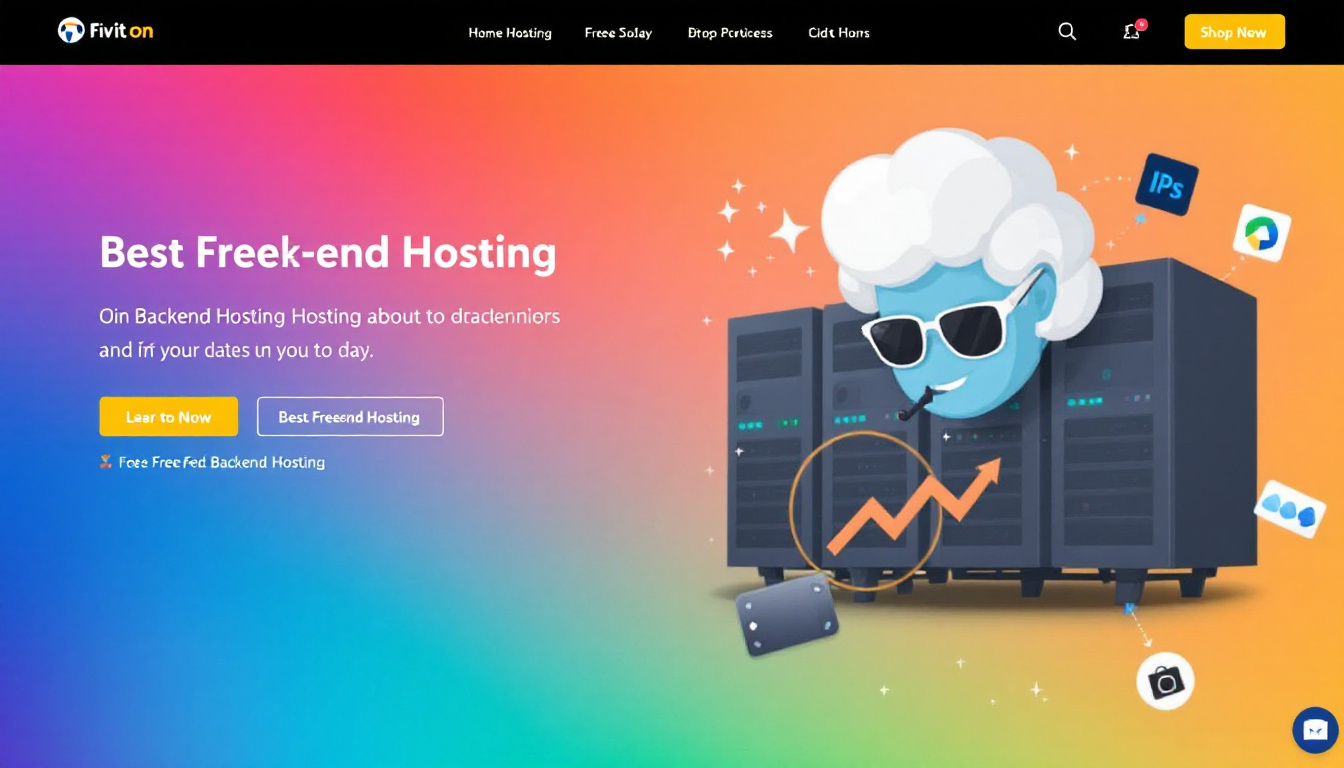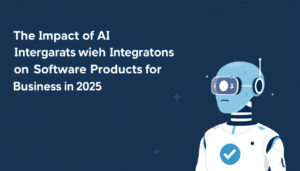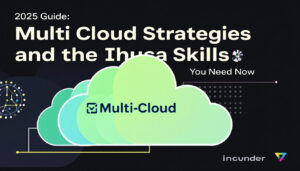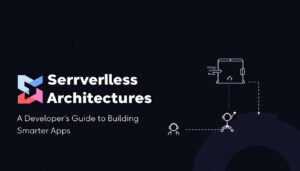Backend hosting serves as the engine that powers web and mobile applications. Developers and startups often seek free backend hosting options to launch projects without heavy financial risk. Reliable hosting solutions let teams focus on building and iterating products while keeping operational costs low.
This guide offers a clear overview of trusted free backend hosting services. You’ll see how these platforms compare, what features they provide at no cost, and which options best support scalable growth. With this information, you can make an informed decision for your project’s needs.
What is Backend Hosting?
Backend hosting provides the infrastructure and resources needed for a web or mobile application’s server-side operations. This type of hosting is responsible for handling requests, storing and retrieving data, running business logic, and managing authentication. Without reliable backend hosting, apps lack the ability to process user input, persist information, or perform essential tasks beyond user interface interactions.
Core Functions of Backend Hosting
Backend hosting solutions run the backend services that power your app’s features. These services support:
- User authentication and security
- Database management and storage
- Server-side logic and API endpoints
- File uploads and media processing
- Push notifications and email integration
By managing these functions, backend hosting enables developers to build applications that go beyond static displays, adding interactivity and data-driven experiences.
Backend Hosting vs. Front-End Hosting
To understand backend hosting, it’s important to distinguish it from front-end hosting. Front-end hosting delivers static files—HTML, CSS, JavaScript—to the user’s browser. Its main job is to show the interface and enable client-side actions.
On the other hand, backend hosting is where the application’s logic lives. It processes data, makes calculations, communicates with databases, and sends responses back to the frontend. In essence, while front-end hosting presents the user interface, backend hosting powers what happens behind the scenes.
- Front-end Hosting: Delivers static assets, handles user interface.
- Backend Hosting: Manages data, logic, user authentication, and database operations.
Both are essential, but backend hosting brings the dynamic capabilities that transform a simple website into a fully interactive application.

Photo by RealToughCandy.com
The Importance of Backend Hosting in App Development
Backend hosting is crucial during all stages of app development. For startups and developers, it enables rapid prototyping, secure data handling, and reliable scaling. Free backend hosting options make it possible to test ideas and launch products without significant investment.
These hosting services often provide built-in security features, automated backups, and integration with other tools. As a project grows, most platforms offer paid plans that scale with increased traffic or data storage needs. By starting with strong backend infrastructure, teams can focus on innovation and user experience.
For more context about evaluating technology decisions for project success, see our resource on Digital Media Job Evaluation Tips.
Key Features to Look for in Free Backend Hosting
Choosing the right free backend hosting service requires careful analysis of several technical criteria. Not all hosting solutions provide the same benefits, and many impose limits or offer varying levels of language and integration support. Here are the key features to examine before committing to a platform.
Scalability and Limitations of Free Tiers
Scalability defines how well your backend can handle growth. Free tiers often set strict caps on resources such as storage, bandwidth, or API calls. These boundaries help providers manage costs while still offering a no-cost entry point for developers.
When evaluating free backend hosting, consider these points:
- User and Storage Limits: Free plans may only support a few users or a small database size.
- Performance Throttling: Some hosts slow down your app after you hit certain usage levels.
- Upgrade Options: Moving to paid tiers should be seamless if your needs exceed the free limits.
Examine the terms of service for each provider. This helps avoid surprises that can disrupt your project as it scales. For those seeking advice on choosing scalable digital solutions, refer to resources like the Updated Guide on Digital Products for IT Professionals.
Supported Databases and Languages
A strong hosting platform must support the programming languages and database systems required by your application. Free backend hosting services typically support some, but not all, popular stack options.
Focus attention on the following aspects:
- Programming Language Support: Look for compatibility with JavaScript (Node.js), Python, PHP, or whichever language your team uses.
- Database Choices: Some providers support SQL databases like PostgreSQL and MySQL, while others focus on NoSQL options like MongoDB or Firebase.
Check not just for availability, but also for version restrictions or limitations on advanced features. Sufficient language and database support is critical for building robust applications without compromise.
Integration Capabilities
Integration refers to how easily your backend can connect with third-party tools, APIs, or services. Modern developers often rely on external authentication systems, logging services, analytics platforms, and payment gateways.
Key factors to review include:
- API Access: Ensure the host supports RESTful APIs, GraphQL, or other required interfaces.
- Built-In Connectors: Some platforms offer integrations with email providers, storage, or CI/CD pipelines.
- Custom Extensions: Assess the ability to add unique plugins or scripts for specific business needs.
Integration capabilities should align with your current and future project workflow. For insight into complementary digital tools and integration strategies, visit the 2025 Digital Product Sales Guide.
Evaluating these core features helps ensure your backend infrastructure is both flexible and sustainable as your project grows.
Top Free Backend Hosting Providers in 2024
Selecting a dependable no-cost backend hosting provider is critical for any developer or startup. In 2024, several platforms offer robust services without upfront costs, making it easier to launch scalable projects. Below is an overview of the key free backend hosting services, highlighting their advantages, technical features, and any distinctive qualities that may set them apart.
Heroku
Heroku is a widely known platform-as-a-service (PaaS) that streamlines deployment for web applications. Its free tier supports multiple programming languages, including Node.js, Python, Ruby, and PHP. Heroku is valued for its simple command-line interface, automated deployment pipelines, and integration with Git.
- Free Tier Details: Users can deploy small applications with limited monthly hours. Sleeping apps help control resource usage.
- Supported Features: Heroku’s platform integrates easily with managed PostgreSQL databases, environment variables, and a marketplace of add-ons.
- Unique Advantage: The service appeals to early-stage projects due to its one-command deployment and broad community support.
Heroku remains a preferred option for individuals who need a fast setup with automatic scaling for small workloads.
Vercel
Vercel focuses on frontend frameworks but also supports serverless backend functions. It is tailored for JAMstack and Next.js applications but allows Node.js API routes for backend logic.
- Free Tier Details: The platform provides unlimited personal projects, serverless functions with some daily limits, and automatic scaling.
- Supported Features: Vercel offers seamless integration with GitHub and instant rollbacks.
- Unique Advantage: Deployments are fast and reliable, with a global edge network for distribution.
Vercel is suitable for projects needing strong frontend-backend integration and quick global delivery.
Firebase
Firebase is a backend-as-a-service platform owned by Google, offering a comprehensive suite of tools. The free Spark plan includes authentication, a real-time NoSQL database, static hosting, and serverless functions.
- Free Tier Details: Limits exist for database storage, function invocations, and network usage, but significant resources are included.
- Supported Features: Built-in user authentication, real-time syncing, and integration with other Google services.
- Unique Advantage: Firebase speeds up development by managing security, scaling, and hosting behind the scenes.
Firebase works well for apps requiring user engagement features, real-time interactions, and cloud messaging.
Supabase
Supabase provides an open-source alternative to Firebase, focusing on an easy SQL-based workflow. It incorporates PostgreSQL as a core component with auto-generated APIs and authentication.
- Free Tier Details: Includes a hosted PostgreSQL database, storage, real-time subscriptions, and authentication with usage caps.
- Supported Features: Instant RESTful and GraphQL endpoints, real-time listeners, and community contributions.
- Unique Advantage: Developers benefit from transparency and control since Supabase solutions are fully open source.
Supabase is well-matched for those who want a relational database approach but still need serverless convenience.
Render
Render is a unified cloud platform designed for simplicity and automation. Its free plans cover both static sites and dynamic backend services like Node.js and Python servers.
- Free Tier Details: The free service includes web services that sleep after periods of inactivity, with limited storage and bandwidth.
- Supported Features: Automatic deploy from Git repositories, managed PostgreSQL, and background jobs.
- Unique Advantage: Render emphasizes a developer-friendly workflow with minimal manual setup.
Render is ideal for full-stack applications needing quick deployment and automated infrastructure management.
Glitch
Glitch is a creative platform aimed at building, remixing, and hosting web apps instantly. Its free plan lets users experiment and launch Node.js-based backend projects with ease.
- Free Tier Details: Glitch allows unlimited public projects, with restrictions on uptime and resource allocation.
- Supported Features: Live editing, instant preview, and a social coding community for sharing and collaboration.
- Unique Advantage: Glitch supports rapid prototyping, making it popular among beginners and those testing new ideas.
For more insights into quality digital product delivery, consider reading about Digital product fulfillment options on Amazon, which explores reliability as a key factor in user satisfaction.
Each listed provider offers unique benefits to different audiences. Their flexible free tiers allow teams to prototype, build, and scale critical backend services at minimal or no cost.
How to Choose the Right Free Backend Hosting Provider
Selecting a free backend hosting provider is an essential step for any project, whether you are developing a prototype or supporting long-term growth. Making the right choice depends on understanding your present requirements, anticipating future changes, and evaluating the available community and ecosystem for ongoing support. Each of these steps ensures a stable foundation for your app, both now and as it scales.
Assessing Project Needs
Before registering for any free hosting service, map out your project’s concrete requirements. The right solution aligns with technical and operational goals.
- Supported languages and frameworks: Does the provider support Node.js, Python, Ruby, or PHP, matching your stack?
- Database compatibility: Confirm support for SQL (like PostgreSQL or MySQL) or NoSQL (like MongoDB or Firebase), as your data model dictates.
- Essential features: Identify must-haves such as authentication, push notifications, or REST API endpoints.
A clear list helps avoid short-term compromises that create setbacks later. Document needs specific to user limits, data storage, integration, and region availability. These factors shape performance, reliability, and user satisfaction from the first build.

Photo by RealToughCandy.com
Considering Future Growth and Upgrades
Free backend hosting often comes with soft or hard usage limits. Consider your app’s projected user growth and planned updates. Gradual increases in users, traffic, or transactions can push your project to exceed the free quota.
Key evaluation points:
- Quota limits: Check caps for bandwidth, storage, database size, and scheduled tasks. Free tiers usually have boundaries that limit concurrent usage, connections, or resource allocation.
- Upgrade pathways: Determine whether the platform offers seamless upgrades to paid plans. Review pricing models for predictable costs as you scale.
- Vendor lock-in risks: Some hosts use proprietary APIs or integrations that make migrating elsewhere difficult if you outgrow their limits.
Careful review of documentation and pricing prevents surprises. For project teams planning long-term launches, these considerations avoid bottlenecks and rushed migrations.
Comparing Ecosystem and Community Support
The surrounding ecosystem of add-ons, integrations, and community resources is a core part of any hosting solution. Active communities and a mature ecosystem extend beyond basic support and provide answers to technical questions, third-party plugins, and troubleshooting solutions.
Aspects to weigh:
- Documentation quality: Providers with thorough, accurate documentation help teams solve problems quickly.
- Community activity: Look for active forums, recent GitHub issues, or chat groups where common challenges are discussed and resolved.
- Ecosystem tools: Assess availability of extensions such as monitoring services, security add-ons, and integration options.
Platforms with a strong ecosystem and active community mean fewer delays and more learning opportunities. By comparing these support systems, you are less likely to face blockers that slow down your workflow or release schedule.
For more specialized guidance on adopting digital tools and maintaining reliable infrastructure, you may benefit from reviewing this comparison of fulfillment methods for digital products on Amazon. This can further inform your evaluation process as your projects grow and evolve.
Migration Paths and Scaling Beyond Free Plans
As a project’s reach expands, free backend hosting plans often start to feel limiting. These limits can present as resource caps, slower response times, or reduced reliability under heavy load. Teams must plan for transition points where moving to a paid tier or changing providers becomes necessary. Preparation ensures the migration process is efficient, cost-conscious, and minimizes disruptions.
When to Consider Paid Plans
Free backend hosting is well-suited for early development and lightweight applications. However, several conditions mark the right time to upgrade:
- Resource Exhaustion: Hitting caps on database size, concurrent connections, or API requests is common as user numbers and data grow.
- Feature Gaps: Advanced needs—like higher SLA guarantees, custom domain support, or secured backups—are typically reserved for paid plans.
- Performance Issues: Throttling or sleep cycles can affect services that outgrow resource quotas, impacting user experience.
- Compliance and Security: Businesses that handle sensitive data or require specific certifications (such as SOC 2 or GDPR compliance) often need elevated hosting features.
Paid plans provide greater consistency and flexibility. They often include better support, higher performance tiers, and access to features not available with free offerings. Providers like Heroku, Vercel, and Firebase retain the core user experience while unlocking higher quotas and operational controls with minimal friction. Projects relying on community-sourced guidance can explore discussions such as choosing backend hosting as traffic grows for first-hand user experience.
Best Practices for Seamless Migration
Preparing for backend migration early reduces risk and unplanned downtime. Follow these principles for a controlled, predictable transition:
- Evaluate Requirements Ahead of Time
- Compare current resource usage with new plan limits.
- Confirm that custom integrations and APIs are supported in the new environment.
- Thoroughly Backup Data
- Copy databases, application files, environment variables, and secrets.
- Use export/import features or automated scripts to verify backup integrity.
- Test the Migration in a Staging Environment
- Replicate the production environment as closely as possible.
- Identify issues with dependencies or connections before the final move.
- Schedule and Communicate Migration Windows
- Plan migration at off-peak hours for minimal impact.
- Inform stakeholders and users in advance.
- Update DNS and Environment Configuration
- Shift domain settings and environment variables to new servers.
- Monitor for propagation delays and possible errors.
- Monitor and Optimize Post-Migration
- Use logging and monitoring tools to observe performance and error rates.
- Troubleshoot any inconsistencies or broken integrations.
In scenarios involving a move between providers, understanding the migration process is key. Resources such as “What is the process of migrating from one hosting company to another?” offer detailed explanations and note common pitfalls.

Photo by Markus Spiske
Each platform varies in how seamless scaling and migration will be. Some allow for a straightforward upgrade, while others may require code changes or manual data transfer. For additional context on evaluating technology transitions and managing digital projects, refer to the guide on digital product fulfillment options.
Balancing present needs with future growth potential helps teams focus their resources where they have the greatest impact. A well-executed migration allows applications to scale smoothly beyond the limitations of free hosting.
Conclusion
Free backend hosting allows developers and startups to build and test applications without significant upfront costs. Each platform offers a different mix of features, scalability, and support. Selecting the right provider depends on the technical requirements and expected growth of your project.
Evaluate each service for compatibility, resource limits, and future upgrade options to avoid disruption as your needs change. Exploring more practical resources, such as a guide to listing digital products on Amazon KDP in 2025, can complement your search for robust digital infrastructure by highlighting related technology choices.
Careful selection and ongoing assessment will support both your current development work and future scaling plans. Thank you for reading—share your experiences or suggest preferred providers to help others find the best solution.









